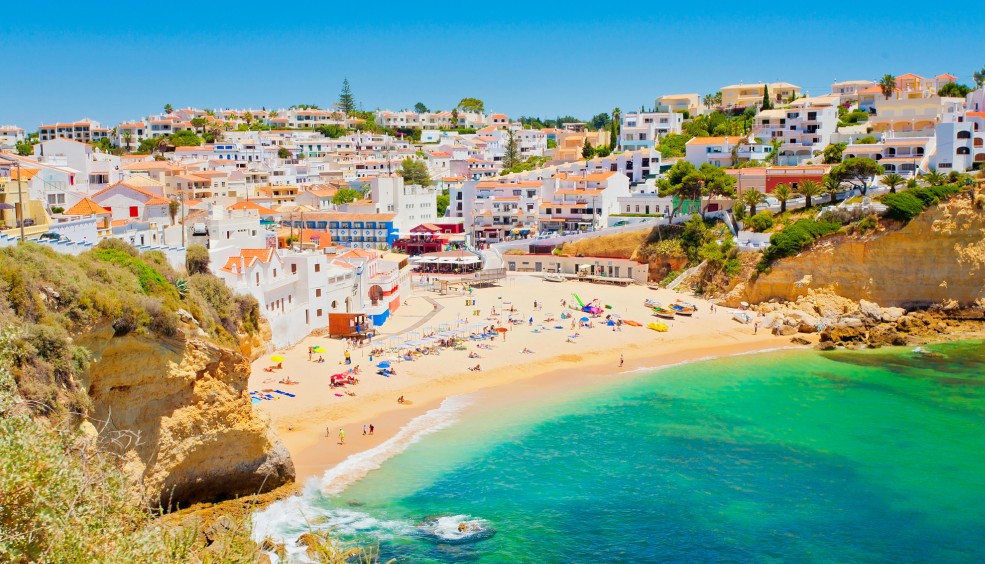7 cheap destinations to enjoy before summer arrives
Do you fancy going away before the official summer holidays, to beat the crowds? Make a note of these ideas.
more infoLa Palma – A Boundless Source of Vitality
La Palma is well known for its pure, pristine and well preserved natural heritage. But, it doesn’t stop there. Over and above leisure activities, the island offers endless possibilities, making it an alluring destination. One of its main claims to fame is the beauty of its landscapes and its wealth of secluded spots for roaming about and communing totally with the above-mentioned pristine nature. Legion are the visitors who come to this wonderful island to get away from the stressful rat race of urban life. We also did it and our experience was very rewarding.
Return to the Source
The biodiversity of La Palma is virtually endless. When you first visit the island – nicknamed the Beautiful Island – the first thing that hits you is the explosion of scents, ranging from salty coastal aromas to the smell of fresh pine. Wafting across its fields are a variety of balmy aromas carried on the breeze. In short, you can enjoy a whole gamut of different fragrances, the fruit of plant evolution in isolation from continental development.
This land is actually home to several microclimates supporting a lush variety of plant species. One activity that struck us most forcefully during our visit was trekking. At times we felt we were steeped in a prehistoric environment, while at others the scenery was reminiscent of the tropics. La Palma is a rambler’s paradise, that’s for sure. The island is covered in an extensive network of trails. They are very well marked with coloured waymarkers, information panels and vertical signposts.
Practically all corners of the island can be reached via these footpaths, from the Volcano Route to the Coastal Path, which follows the perimeter of the island, and the Port-to-Port Route, which connects Santa Cruz de La Palma to Puerto de Tazacorte. Further information on the trails here.
These stunning walks enabled us to discover some of the indigenous species. We found it interesting that birds, reptiles and invertebrates make up the bulk of indigenous species. One noteworthy fact is that the fauna on La Palma is particularly rich in invertebrates. The reason for this is related to its insularity, which has led animal populations to be genetically isolated, facilitating the preservation of archaic species or the emergence of new species due to local evolution.
It’s a thrilling experience to wander through the island’s forests along the numerous trails and to search for indigenous species. One of them is the laurel pigeon, which can be found mainly in La Palma’s laurel forests, and Bolle's pigeon. The Tenerife speckled lizard is the most widespread of the reptiles and amphibians.
Walking Among Volcanoes
La Palma clearly offers a vast array of water activities. It is an idyll for enthusiasts of canoeing, diving and so on. But, the island hinterland also has its charm. You can do anything, from quadding and mountain biking to star-gazing and trekking. In the centre and south of the island, you can take the aforementioned Volcano Route, endowed with natural hiking trails along what used to be an important communications route between districts. This age-old footpath traverses the municipalities of El Paso, Mazo and Fuencaliente within the Cumbre Vieja Nature Reserve, and is impressively well appointed and signposted. The hike is tough, particularly because vegetation is rather sparse throughout. Be warned, too, that slopes can be very steep. Make sure you have the right gear and enough food and water to last for the duration of the trek, which takes about six and half hours, if you end at Los Canarios, or eight and a half if you complete the full trail, finishing at Faro de Fuencaliente.
The Volcano Route is a 30.9 kilometre hike, with an accumulated slope of 1,207 metres. The natural trail ranges from the minimum altitude of 725 metres at Fuencaliente to 1,932 metres on the summit crestline. Surfaces vary between forest trails, footpaths and asphalt. This trekking route enables you to see both island slopes and, if you’re lucky, to catch sight of such indigenous species as the rook and kestrel.
Come and recharge your batteries in La Palma. Check out our flights here.
Text and photos by La Palma Tourist Board
more info



